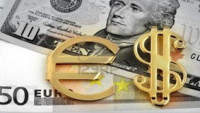 The recovery in European markets continued last week the fourth successive weekly gain and while the FTSE100 closed on its highs, there were some signs that markets in Europe were starting to look a little tired with the DAX and Eurostoxx 50 unable for now to push up beyond their 200-day MA’s.
The recovery in European markets continued last week the fourth successive weekly gain and while the FTSE100 closed on its highs, there were some signs that markets in Europe were starting to look a little tired with the DAX and Eurostoxx 50 unable for now to push up beyond their 200-day MA’s.
Even in the US, where we’ve seen some fairly decent earnings reports and where markets closed higher on the week, we still ended the week with two successive daily declines, as tech stocks fell back sharply.
Most of last week’s gains in the FTSE100 came about as a result of a rebound in commodity stocks as oil prices, as well as metals prices surged to multi year highs, though the sharp drop in the pound didn’t hurt either, after Bank of England governor Mark Carney cast doubt on the probability of a UK rate rise next month.
Over in Europe there has been some concern that economic activity has hit its high-water mark in recent months with the only debate over whether it is merely a pause for breath or an early indication of a more significant slowdown. Investors certainly appear concerned if last week’s April investor sentiment ZEW reading was any indication coming in at a 5 year low of -8.2. Despite this scepticism markets in Europe are still sitting near a one month high, with the recent slide in the euro also helping a little.
Today’s publication of the latest German and French flash PMI data in manufacturing and services could well add further fuel to the debate about economic activity in Europe’s two largest economies.
These have shown signs of slowing in recent months and while it’s not been particularly alarming in terms of the overall headline readings the lack of inflation does speak to a lack of demand on a wider scale. Today’s manufacturing and services data are expected to come in slightly weaker than the March numbers with France manufacturing slipping back to 53.4, after March’s sharp slide to 53.7 from 56.1. In services France has been performing much better with a slowdown to 56.6 from 56.9.
In Germany manufacturing has looked and remained fairly solid at with a slight slowdown to 57.6 from 58.2, however services have been a bit of a weak spot lagging behind France in the last six months, however we can still expect to see a fairly decent 53.9.
These indicators aren’t likely to have too much of an influence on one of the main events of this week and the European Central Bank rate meeting on Thursday. Policymakers main concern is also likely to be on the fact that inflationary pressure within the euro area remains benign at a time when the best part of the recent economic growth story appears to be in the rear-view mirror.
One other thing to keep an eye on this week is the oil price which for now shows no signs of nearing a short-term peak. President Trump’s latest intervention on the recent rise in the oil price may well have prompted a short-term bout of profit taking, but it doesn’t appear to have undermined the overall direction for now. His accusation that OPEC was keeping prices artificially high is certainly a valid one given recent pronouncements from some OPEC members favouring a higher price above $80 a barrel.
While in the short term this may seem a sensible move from OPEC, and Saudi Arabia in particular, it is one that could backfire on them. Bond markets appear to be starting to price in an inflationary scenario after US 10-year yields hit a four-year high and closer to that 3% level that has taken on a symbolism of its own in the last few months.
If prices and interest rates start to rise too quickly then the economic recovery that is already starting to show signs of fatigue could start to slow further and could get choked off completely.
EURUSD – last week’s failure to consolidate a move above the 1.2400 area has seen the euro slide back below the 1.2320 level, which could well reopen a test of the 1.2160 level. Interim support also comes in just above the 1.2200 area. We need to see a break below 1.2160 or a break above 1.2540 to suggest a strong move in either direction.
GBPUSD – slid back sharply last week having failed to overcome the 200-week MA, posting a key week reversal which suggests that we could well see a retest of the April lows and the prospect of a return towards the lows of the year at 1.3720. Pullback should find resistance at the 1.4080 area and 1.4180.
EURGBP – last week’s gains look set to see a retest of the 0.8820 area and the 50 and 100-day MA’s. To do this we need to hold above the 0.8740 area, while below that we also have support at the 0.8690 area. Only a fall back below 0.8680 retargets the 0.8620 lows of earlier this week.
USDJPY – still on course for a return to the 108.20 area and potentially 109.20. Support still remains back at the 106.60 area and this month’s lows. The 105.20 area also remains a key support with a break below 105.00 opening up a move towards 103.00.












